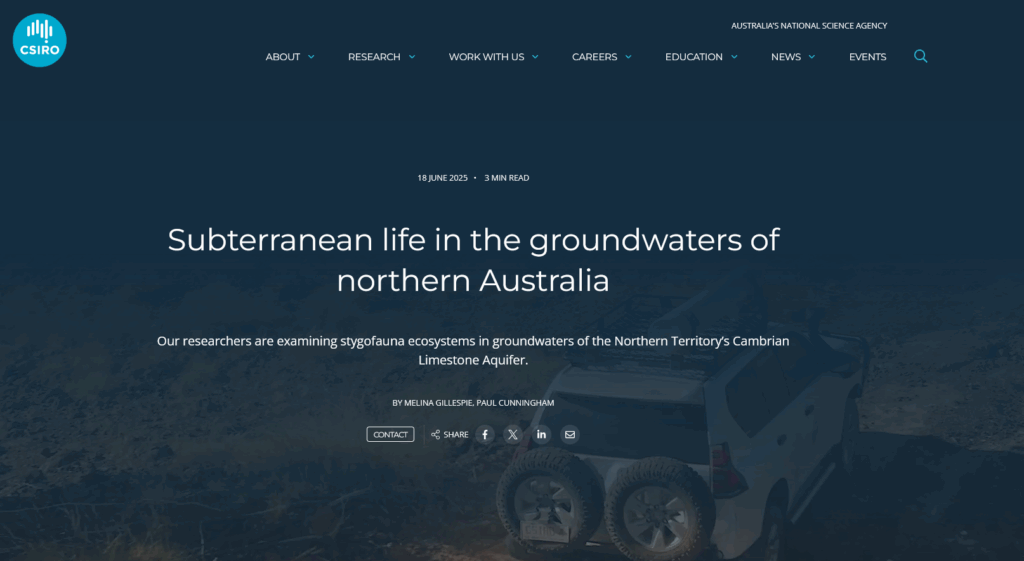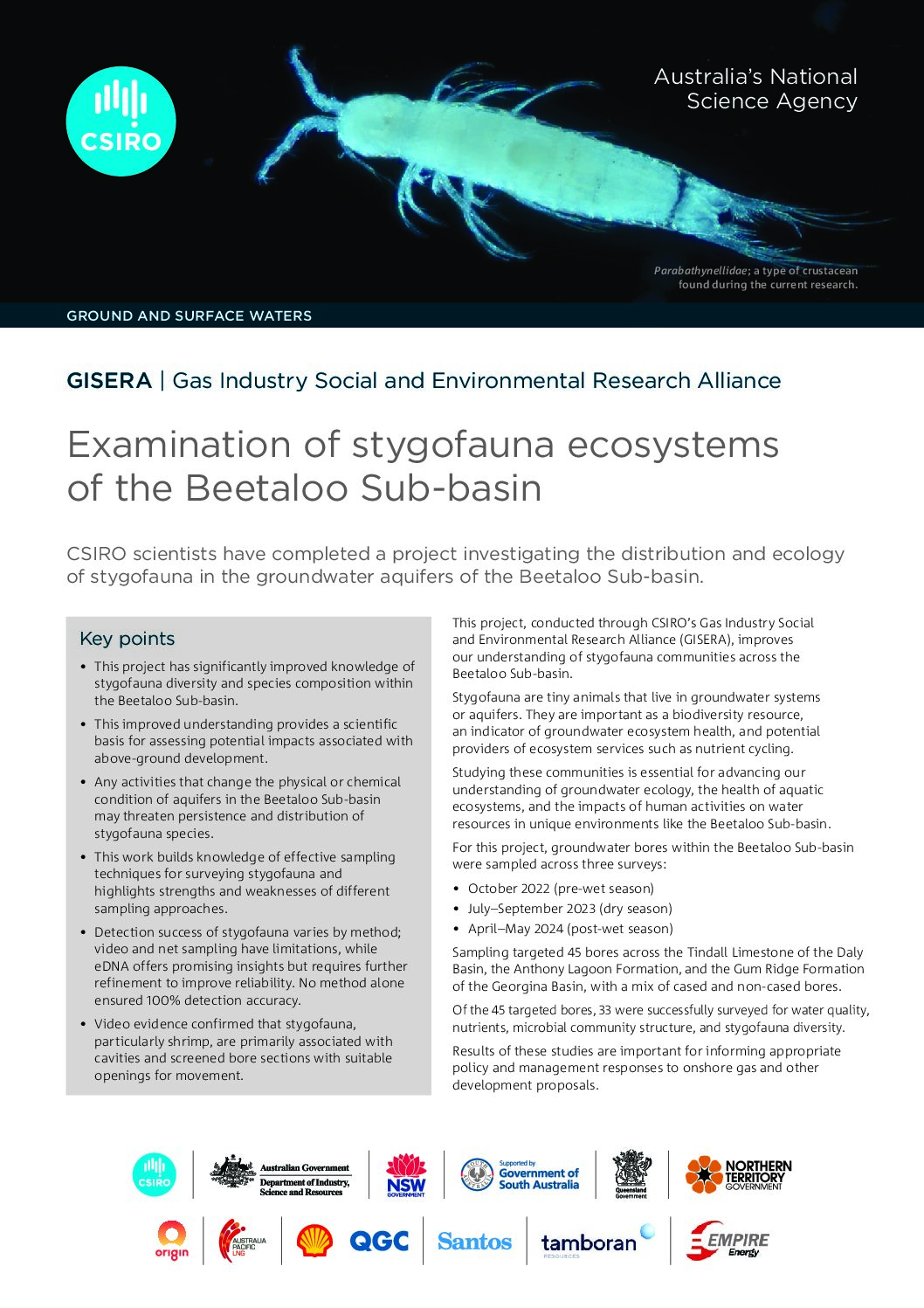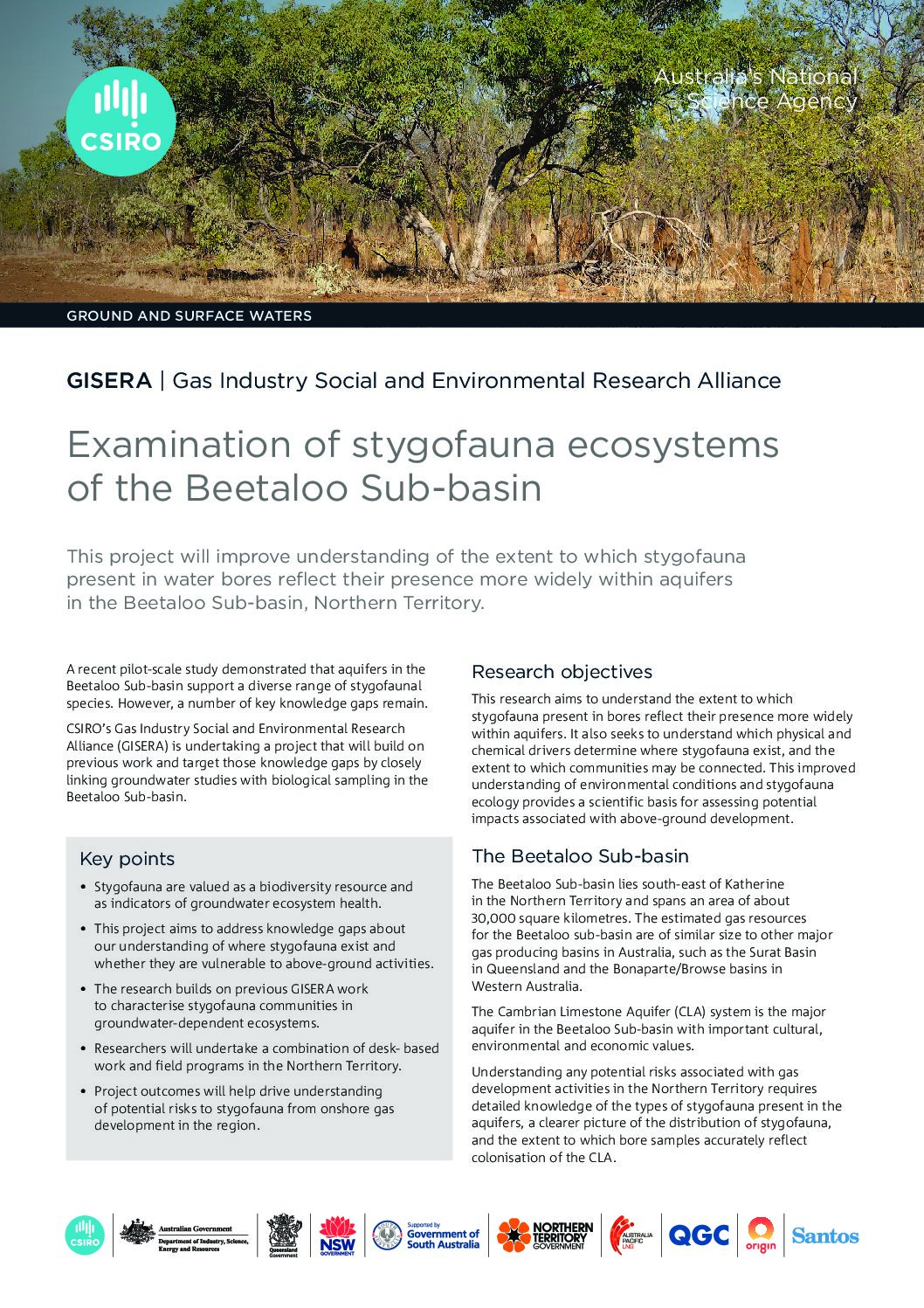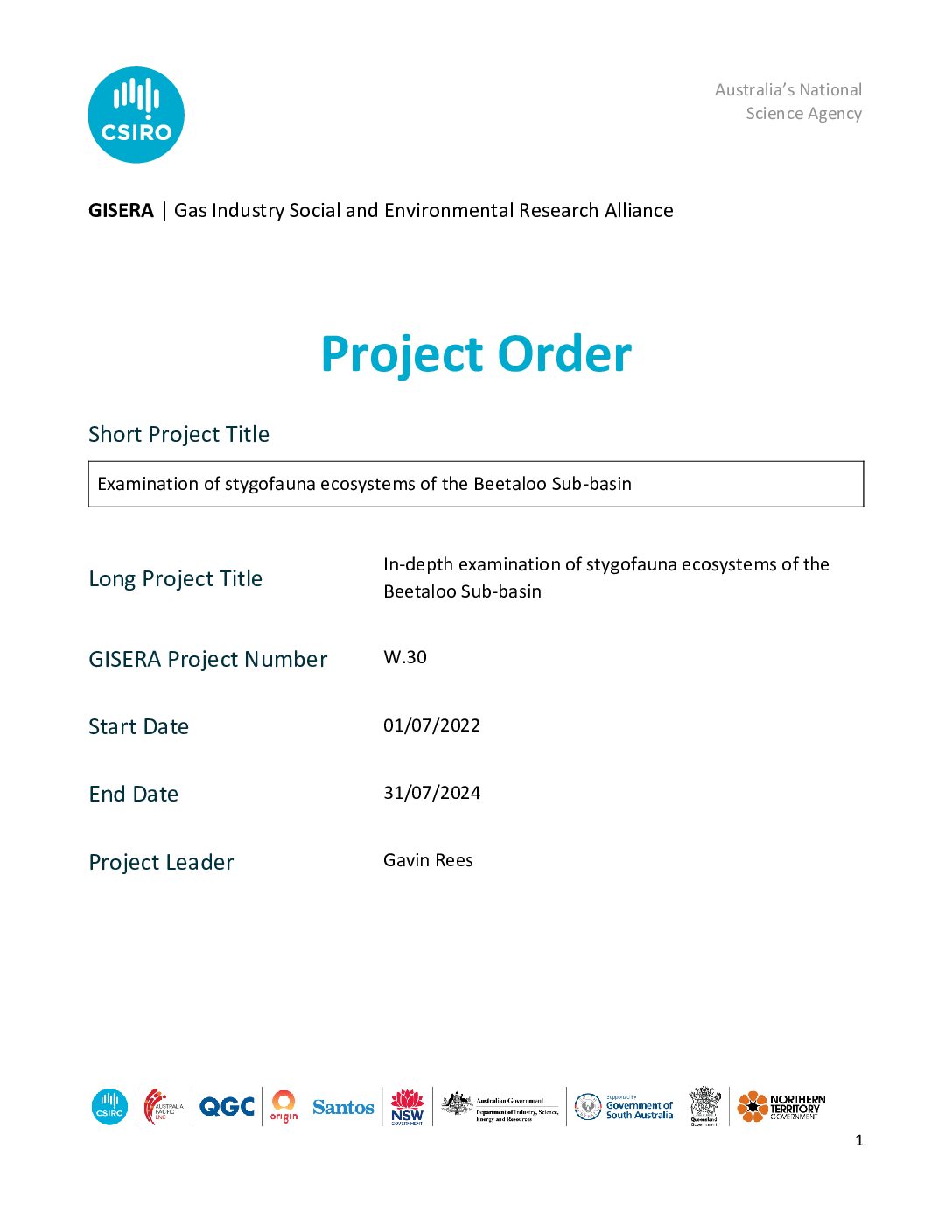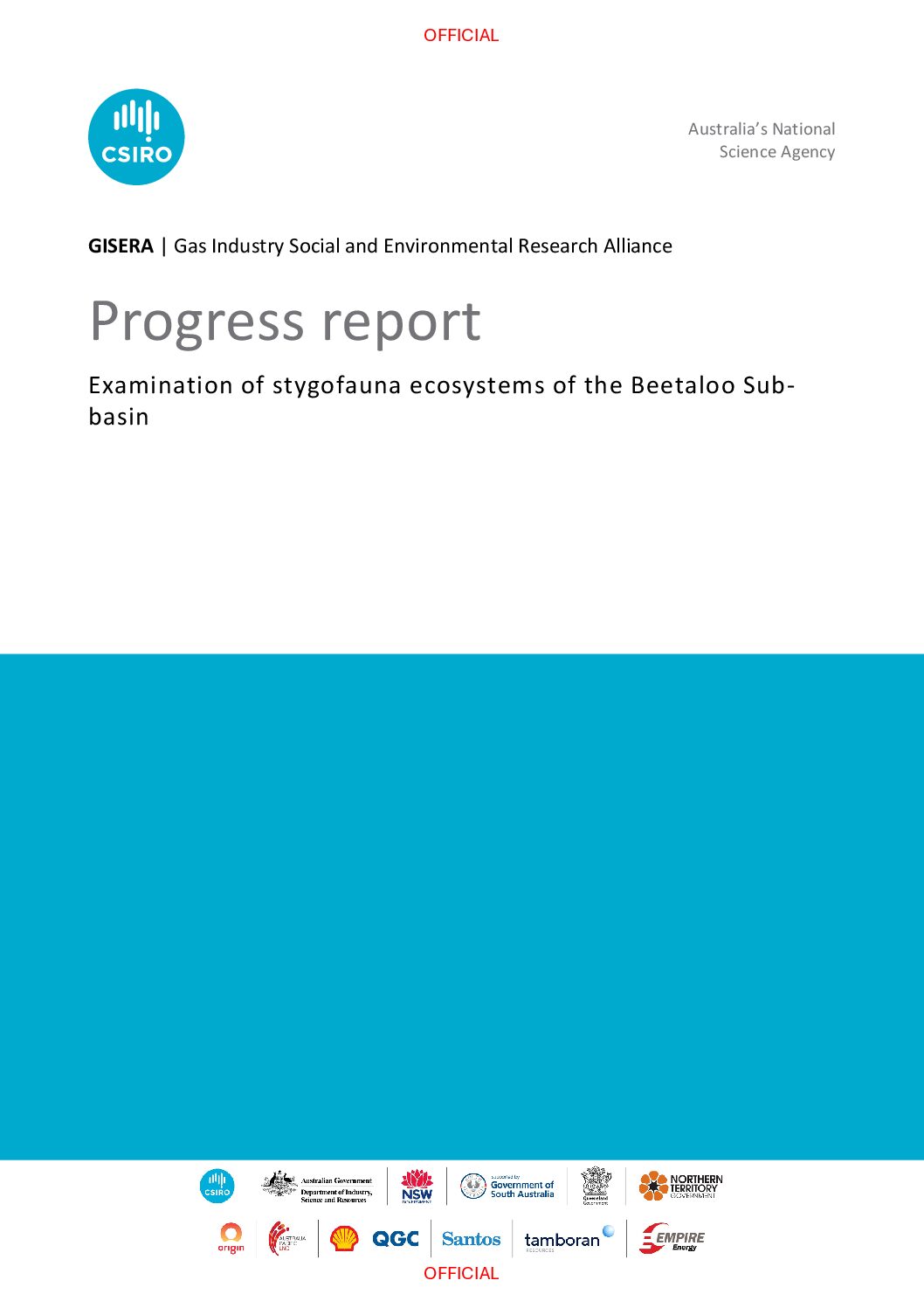Examination of stygofauna ecosystems of the Beetaloo Sub-basin
This research improves understanding of the extent to which stygofauna present in bores reflect their presence more widely within aquifers. It examines the physical and chemical drivers that may determine where stygofauna exist and how communities may be connected.
The project involved the collection and review of relevant data on stygofauna in the NT, as well as detailed field programs that target bores across the Beetaloo Sub-basin. This work builds on previous work linking groundwater studies with biological sampling to target key knowledge gaps.

CSIRO scientists used a combination of mesh nets and collection jars, downhole cameras, and environmental DNA analysis in their search for stygofanua in aquifers of the Beetaloo Sub-basin.
Three field surveys were conducted in October 2022 (pre-wet season), July–September 2023 (dry season), and April–May 2024 (post-wet season).
Sampling targeted 45 bores across the Tindall Limestone of the Daly Basin, the Anthony Lagoon Formation, and the Gum Ridge Formation of the Georgina Basin, with a mix of cased and non-cased bores.
Of the 45 targeted bores, 33 were successfully surveyed for water quality, nutrients, microbial community structure, and stygofauna diversity.
This research builds on a previous CSIRO stygofauna pilot study and provides a framework for understanding the distribution and ecology of stygofauna within the Beetaloo Sub-basin and highlights the need for targeted monitoring strategies.
Key points
- This project has significantly improved knowledge of stygofauna diversity and species composition within the Beetaloo Sub-basin.
- This improved understanding provides a scientific basis for assessing potential impacts associated with above-ground development.
- Any activities that change the physical or chemical condition of aquifers in the Beetaloo Sub-basin may threaten persistence and distribution of stygofauna species.
- This work builds knowledge of effective sampling techniques for surveying stygofauna and highlights strengths and weaknesses of different sampling approaches.
- Detection success of stygofauna varies by method; video and net sampling have limitations, while eDNA offers promising insights but requires further refinement to improve reliability. No method alone ensured 100% detection accuracy.
- Video evidence confirmed that stygofauna, particularly shrimp, are primarily associated with cavities and screened bore sections with suitable openings for movement.
- Environmental DNA (eDNA) analyses characterised biotic communities within Beetaloo Sub-basin aquifers, ranging from microbial primary consumers to apex predators (the shrimp Parisia unguis). Knowledge gaps remain in understanding stygofaunal food webs and dominant energy pathways within aquifers.
- For the shrimp Parisia unguis results reveal genetically distinct populations within the Beetaloo Sub-basin, with minimal overlap occurring between two of the sampled populations. This suggests that although some populations are genetically distinct, some gene flow is still evident among populations. Further sampling is required to better understand gene flow between Parisia unguis populations.
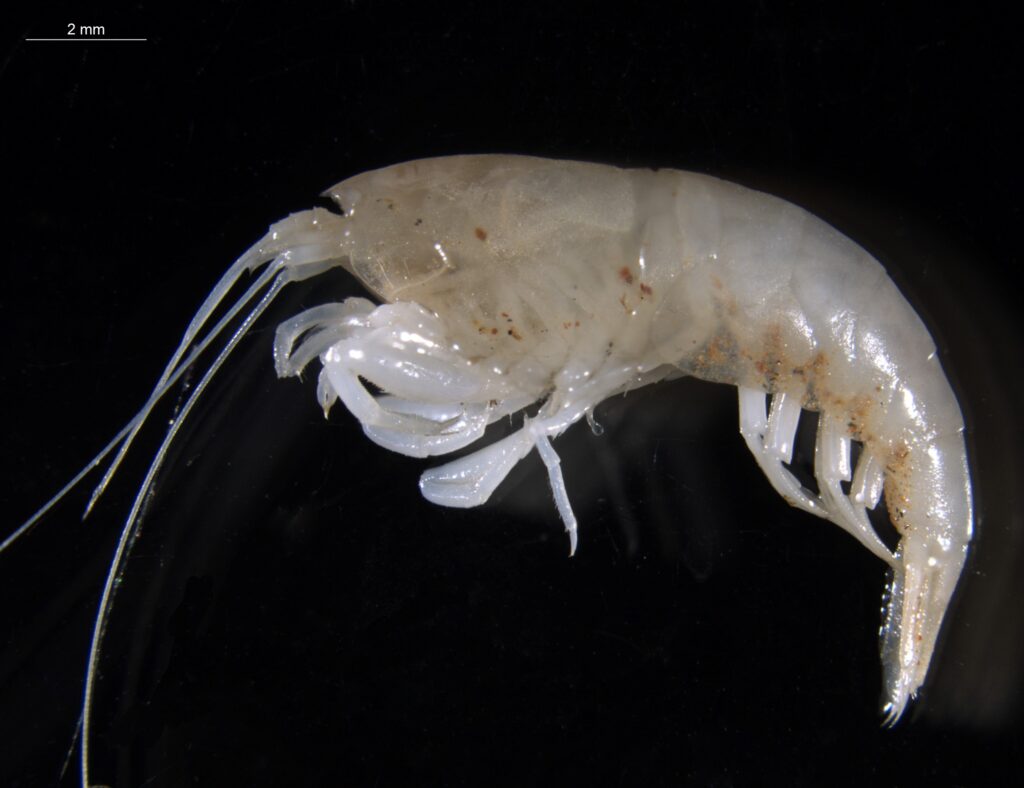
Apex predator: The atyid shrimp, Parisia unguis
Apex predator: The atyid shrimp, Parisia unguis, is large relative to all other taxa collected and its predatory behaviour places it at the top of the Beetaloo subterranean aquatic
food web.
This study forms part of a suite of other research activities conducted through CSIRO’s GISERA in the Northern Territory, which include research into groundwater, mitigation and offsets for Australian life cycle greenhouse gas emissions, microbial degradation of chemicals, baseline studies for groundwater, methane and seismicity, methane emissions from drilling, transport impacts, biodiversity and decommissioning.
Results of these studies are important for informing appropriate policy and management responses to onshore gas development proposals.
Want to learn more about these mysterious creatures that live deep underground?
Stygo story screenshot 2025-07-03
Watch this CSIRO story map about our stygofauna research.

